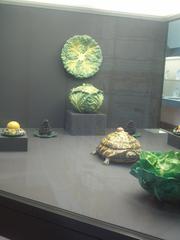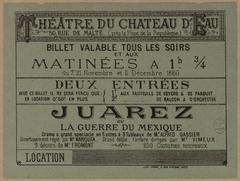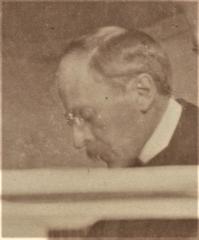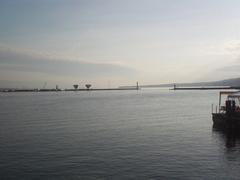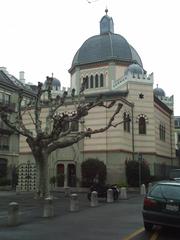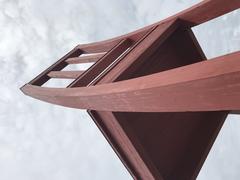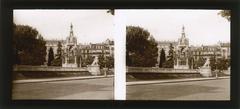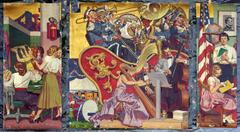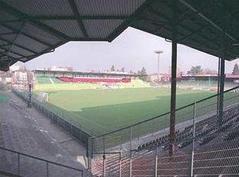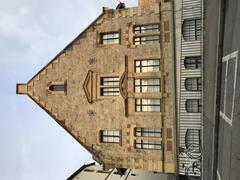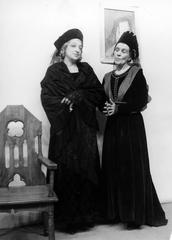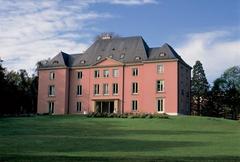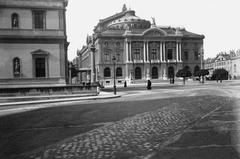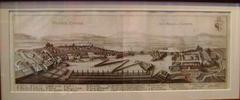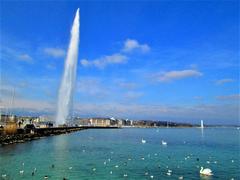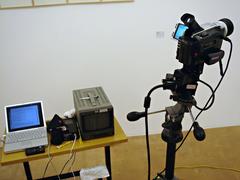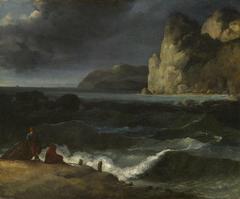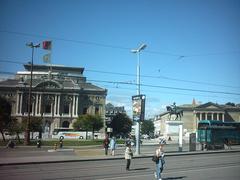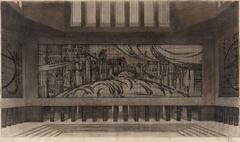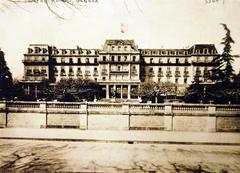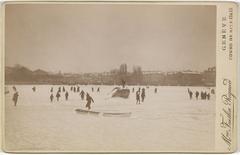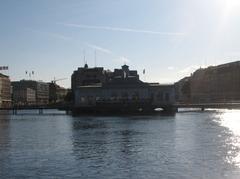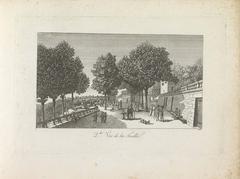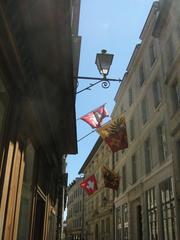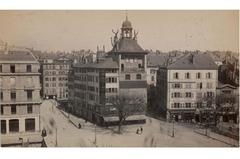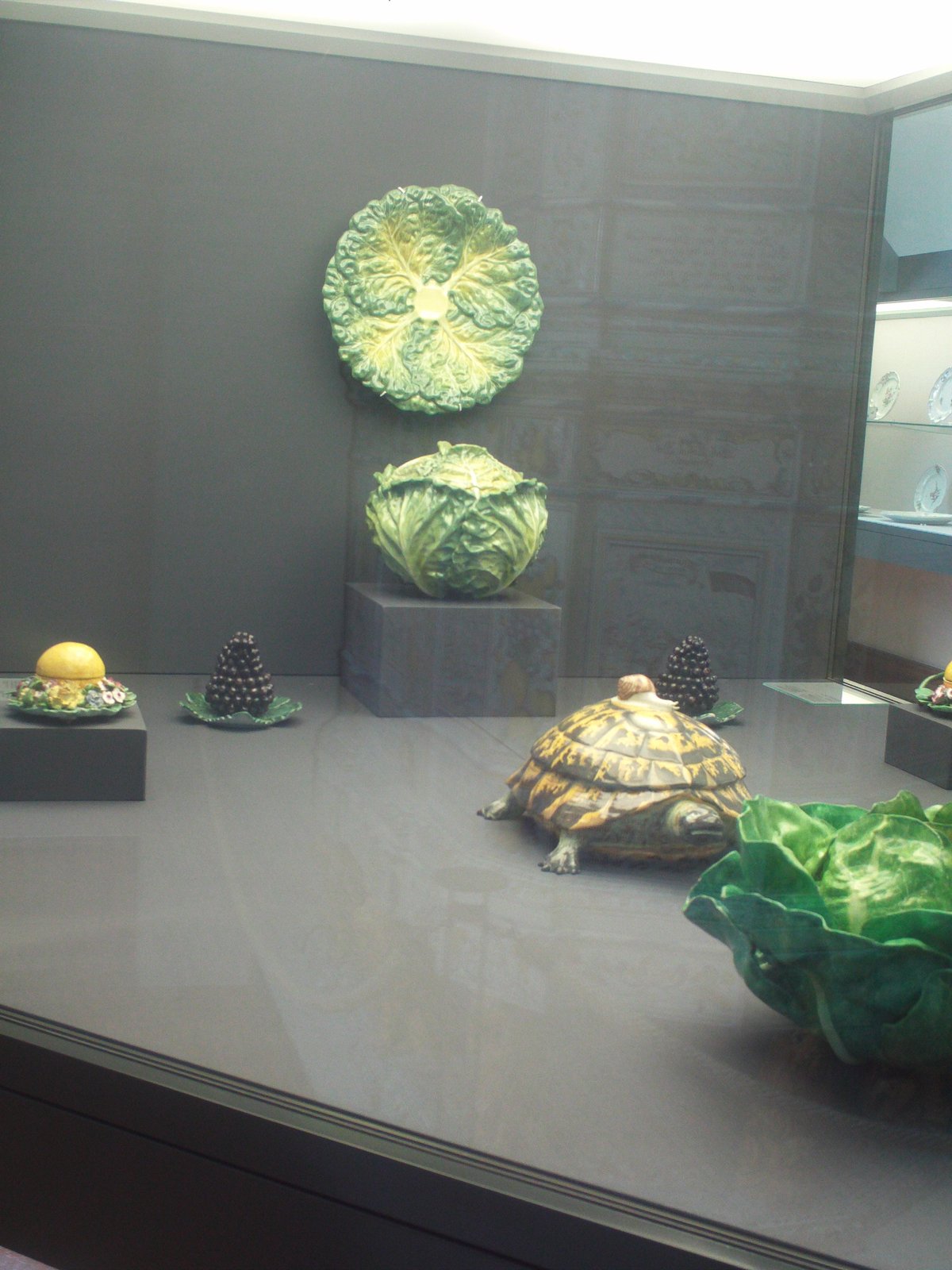
Comprehensive Guide to Visiting Musée Ariana, Geneva, Switzerland
Date: 19/07/2024
Introduction
Nestled in the heart of Geneva, Musée Ariana, also known as the Swiss Museum of Ceramics and Glass, stands as a testament to the rich history and artistry of ceramics and glass. Founded in 1884 by Gustave Revilliod, this museum was named in honor of his mother, Ariane de la Rive. Revilliod’s vision was to create a sanctuary for his extensive collection of ceramics and glass, amassed during his travels across Europe and the Middle East. The museum’s architectural grandeur, influenced by the Italian Renaissance and Baroque styles, is evident in its neo-baroque and neo-classical design, making it one of Geneva’s most architecturally significant buildings (Musée Ariana official website) (Ville de Genève).
Over the years, Musée Ariana has expanded its collection to over 20,000 objects, ranging from ancient artifacts to contemporary masterpieces. The museum’s diverse collection includes European, Islamic, and East Asian ceramics, as well as an impressive array of glass art. One of the most notable additions to the collection is the bequest from Charles-Edouard Jeanneret-Gris, better known as Le Corbusier. This bequest significantly enriched the museum’s holdings, further establishing its reputation as a premier institution for ceramics and glass art.
Today, Musée Ariana continues to evolve, embracing new technologies and innovative exhibition techniques to enhance the visitor experience. The museum offers a variety of educational programs, special exhibitions, and guided tours, making it a vital cultural and educational hub in Geneva. This comprehensive guide will provide you with all the information you need to make the most of your visit to Musée Ariana, including visiting hours, ticket prices, travel tips, and nearby attractions.
Table of Contents
- Discover the History and Evolution of Musée Ariana
- Explore Musée Ariana
- Conclusion
- References
Discover the History and Evolution of Musée Ariana - Geneva’s Premier Museum of Ceramics and Glass
Founding and Early Years
Musée Ariana was founded by Gustave Revilliod, a passionate art collector and philanthropist. The museum was named after his mother, Ariane de la Rive, and was officially opened to the public in 1884. Revilliod envisioned a space that would house his extensive collection of ceramics and glass, as well as other artworks he had acquired during his travels across Europe and the Middle East.
Revilliod was deeply influenced by the architectural styles he encountered during his travels, particularly the Italian Renaissance and Baroque periods. This influence is evident in the museum’s design, which features a grand façade, intricate ornamentation, and a spacious interior. The building itself is a work of art, reflecting the eclectic tastes of its founder.
Architectural Significance
The architecture of Musée Ariana is a blend of neo-baroque and neo-classical styles, making it one of the most architecturally significant buildings in Geneva. The museum’s design was the result of a collaboration between Revilliod and the architect Émile Grobéty. The building’s façade is adorned with columns, pilasters, and intricate carvings, while the interior features a grand staircase, marble floors, and a stunning glass dome.
The museum’s layout was designed to provide an optimal viewing experience for visitors. The spacious galleries and high ceilings create an airy and open atmosphere, allowing natural light to illuminate the exhibits. The central atrium, with its glass dome, serves as the focal point of the museum, providing a dramatic and awe-inspiring entrance for visitors.
Collection Expansion and Development
Over the years, Musée Ariana’s collection has grown significantly, thanks to donations, acquisitions, and bequests. The museum’s collection now includes over 20,000 objects, ranging from ancient ceramics and glassware to contemporary pieces. The collection is divided into several categories, including European ceramics, Islamic ceramics, East Asian ceramics, and glassware.
One of the most notable additions to the museum’s collection was the bequest of the Swiss collector and art dealer, Charles-Edouard Jeanneret-Gris, better known as Le Corbusier. His donation included a significant number of ceramics and glass pieces, further enriching the museum’s already impressive collection.
World War II and Post-War Period
During World War II, Musée Ariana faced significant challenges, including the threat of damage from bombings and the potential loss of its collection. To protect the museum’s valuable artifacts, many of the most important pieces were moved to secure locations. Despite these challenges, the museum continued to operate, providing a cultural refuge for the people of Geneva during a tumultuous time.
In the post-war period, the museum underwent several renovations and expansions to accommodate its growing collection and to modernize its facilities. These renovations included the addition of new galleries, improved lighting and climate control systems, and the restoration of the building’s historic features.
Modern Era and Recent Developments
In recent years, Musée Ariana has continued to evolve, embracing new technologies and innovative exhibition techniques to enhance the visitor experience. The museum has implemented interactive displays, multimedia presentations, and virtual tours, allowing visitors to engage with the exhibits in new and exciting ways.
One of the most significant recent developments at Musée Ariana was the completion of a major renovation project in 2019. This project included the restoration of the museum’s historic façade, the installation of new lighting and climate control systems, and the creation of new exhibition spaces. The renovation project was funded by a combination of public and private sources, including the City of Geneva and several philanthropic organizations.
Explore Musée Ariana - Visiting Hours, Tickets, and Highlights of Geneva’s Ceramic and Glass Museum
Introduction
Located in the heart of Geneva, the Musée Ariana offers a captivating journey through the history and artistry of ceramics and glass. Whether you’re a history buff, an art enthusiast, or simply looking to explore one of Geneva’s cultural gems, Musée Ariana promises a rich and immersive experience.
Significance and Highlights of the Museum’s Collection
Historical Significance
Musée Ariana, founded by Gustave Revilliod in the late 19th century and named after his mother, Ariane de la Rive, stands as a testament to the rich history of ceramic and glass art. The museum’s collection spans over 1,200 years, showcasing the evolution of these art forms from the Middle Ages to contemporary times. This historical breadth makes the Musée Ariana a crucial repository of cultural heritage, reflecting the artistic, technological, and social changes over centuries.
Key Highlights of the Collection
European Ceramics
The European ceramics collection is one of the museum’s most extensive and significant. It includes pieces from major European ceramic centers such as Meissen, Sèvres, and Delft. The collection features a variety of styles and techniques, from the intricate blue and white Delftware to the luxurious porcelain of Meissen. Notable pieces include a 17th-century Delft vase and an 18th-century Meissen figurine, both exemplifying the high level of craftsmanship and artistic expression of their respective periods.
Islamic Ceramics
The Islamic ceramics collection offers a fascinating glimpse into the rich artistic traditions of the Islamic world. The collection includes pieces from Persia, Turkey, and the wider Middle East, dating from the 9th to the 19th centuries. Highlights include a 13th-century Persian bowl with intricate geometric patterns and a 16th-century Iznik tile featuring vibrant floral motifs. These pieces not only showcase the technical prowess of Islamic potters but also reflect the cultural and religious influences that shaped their art.
Asian Ceramics
The Asian ceramics collection is another cornerstone of the museum’s holdings. It includes Chinese, Japanese, and Korean ceramics, ranging from ancient to modern times. The Chinese collection is particularly noteworthy, featuring exquisite examples of Ming and Qing dynasty porcelain. A standout piece is a 15th-century Ming dynasty vase, renowned for its delicate blue and white decoration. The Japanese collection includes fine examples of Imari and Kutani ware, while the Korean collection features elegant celadon pieces from the Goryeo dynasty.
Glass Art
The museum’s glass collection is equally impressive, encompassing a wide range of styles and techniques from different periods and regions. The collection includes ancient Roman glass, medieval stained glass, and modern studio glass. Notable pieces include a 1st-century Roman glass flask, a 13th-century stained glass window from a French cathedral, and a contemporary glass sculpture by Dale Chihuly. These pieces highlight the versatility and beauty of glass as an artistic medium.
Contemporary Ceramics and Glass
In addition to its historical collections, the Musée Ariana also places a strong emphasis on contemporary ceramics and glass. The museum regularly acquires works by leading contemporary artists, ensuring that its collection remains dynamic and relevant. Highlights include pieces by renowned ceramicists such as Bernard Leach and Lucie Rie, as well as glass artists like Lino Tagliapietra and Toots Zynsky. These contemporary works demonstrate the ongoing innovation and creativity in the fields of ceramics and glass art.
Special Exhibitions and Programs
The Musée Ariana is known for its dynamic program of special exhibitions, which often focus on specific themes, periods, or artists. These exhibitions provide visitors with the opportunity to explore different aspects of the museum’s collection in greater depth. Recent exhibitions have included “Ceramics of the Islamic World,” “Japanese Porcelain: Imari and Kakiemon,” and “Contemporary Glass Art: New Perspectives.” The museum also hosts a variety of educational programs, including workshops, lectures, and guided tours, aimed at engaging visitors of all ages and backgrounds.
Visitor Information
Visiting Hours
- Monday: Closed
- Tuesday to Sunday: 10:00 AM - 6:00 PM
Ticket Prices
- Adults: CHF 10
- Students and Seniors: CHF 5
- Children under 12: Free
Accessibility
The Musée Ariana is accessible to visitors with disabilities. Wheelchairs are available on request, and the museum is equipped with elevators and ramps.
Travel Tips
- Plan Ahead: Check the museum’s website for the latest information on opening hours, ticket prices, and any special exhibitions or events that may be taking place during your visit.
- Guided Tours: Take advantage of the museum’s guided tours, which offer valuable insights into the collection and its significance.
- Workshops and Lectures: Participate in the museum’s educational programs, which provide a deeper understanding of ceramics and glass art.
- Museum Shop: Don’t forget to visit the museum shop, which offers a range of books, souvenirs, and unique ceramic and glass items.
Nearby Attractions
While visiting the Musée Ariana, consider exploring nearby attractions such as:
- Palais des Nations: The European headquarters of the United Nations.
- Jardin Botanique: Geneva’s beautiful botanical garden.
- Lake Geneva: Perfect for a leisurely walk or boat ride.
Conservation and Research
The Musée Ariana is not only a museum but also a center for conservation and research. The museum’s conservation department is dedicated to preserving and restoring its collection, ensuring that these valuable pieces can be enjoyed by future generations. The museum also conducts research on its collection, contributing to the broader field of ceramic and glass studies. This research often results in publications, exhibitions, and collaborations with other institutions, further enhancing the museum’s role as a leading center for the study of ceramics and glass.
FAQ
Q: What are the Musée Ariana visiting hours?
- A: The museum is open from Tuesday to Sunday, 10:00 AM to 6:00 PM, and is closed on Mondays.
Q: How much are the tickets?
- A: Tickets are priced at CHF 10 for adults, CHF 5 for students and seniors, and free for children under 12.
Q: Is the Musée Ariana accessible to visitors with disabilities?
- A: Yes, the museum is accessible, with wheelchairs available on request, and is equipped with elevators and ramps.
Q: Are there guided tours available?
- A: Yes, the museum offers guided tours that provide valuable insights into its collection and significance.
Conclusion
Musée Ariana stands as a beacon of cultural heritage in Geneva, offering visitors a unique glimpse into the world of ceramics and glass art. From its founding by Gustave Revilliod in 1884 to its modern-day innovations, the museum has continually evolved to meet the needs of its diverse audience. The architectural splendor of the museum, combined with its extensive and varied collection, provides a rich and immersive experience for all visitors (Musée Ariana official website) (Ville de Genève).
The museum’s commitment to accessibility, educational programs, and special events ensures that it remains a dynamic and engaging institution. Whether you’re a seasoned art enthusiast or a curious traveler, Musée Ariana offers something for everyone. Its proximity to other major attractions in Geneva, such as the United Nations Office and the International Red Cross Museum, makes it a must-visit destination in the city.
In conclusion, a visit to Musée Ariana is not just an exploration of ceramics and glass art, but a journey through history, culture, and innovation. Plan your visit today and discover the treasures that await you at this extraordinary museum.
References
- Discover the History and Evolution of Musée Ariana - Geneva’s Premier Museum of Ceramics and Glass, 2024, Musée Ariana official website
- Explore Musée Ariana - Visiting Hours, Tickets, and Highlights of Geneva’s Ceramic and Glass Museum, 2024, Ville de Genève
- Visiting Musée Ariana in Geneva - Hours, Tickets, and Tips, 2024, Ville de Genève
